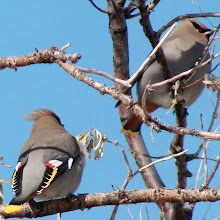My first encounter with these lovely flowers was culinary: they were sprinkled through a salad made solely from home-garden plants. As it turns out, the mild, slightly sweet flavor of these flavors has also led to their use on cakes, and even as a traditional ravioli filling in the Liguria region of Italy.
If you plan on using these flowers as ingredients, be sure to avoid the hairy sepals - they sting a bit on the tongue.
This species is native to Syria, but has been transplanted widely as companion species to tomatoes (it attracts pollinators to tomatoes when intercropped with them). A member of the Boraginaceae, starflower brings the current ToD tally of species in this family to four. But check out the striking superficial similarity of borage flowers to those of Dodecatheon, a member of the Primulaceae (Primrose family):
Photo Catherine Munro
Dodecatheon flowers apparently need to be pollinated by vigorously-buzzing pollinators for successful fruit set, and I have noticed that European Honeybees prefer the Borage in my backyard over the nearby Sage (which attracts native bumblebees).
The starflower photos are from my backyard garden in Santa Cruz, where the plants attain heights of over one meter:








No comments:
Post a Comment